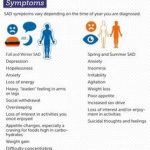
Contents
- 1 Bridion
- 1.1 7 Reasons You Are Tired After Surgery
- 1.2 Does Your Heart Rate Increase When Healing From Surgery?
- 1.3 Cosmetic Surgery for Ears (Otoplasty)
- 1.4 How Long Does It Take to Recover From Laparoscopic Surgery?
- 1.5 Is Lumpectomy a Major Surgery?
- 1.6 What Is Excisional Surgery?
- 1.7 How Long Does Laparoscopic Gastric Bypass Surgery Take?
- 1.8 Is PEG Tube Placement a Major Surgery?
- 1.9 What Surgery Can I Have To Stop Snoring?
- 1.10 Is Cochlear Implant Surgery Invasive?
- 1.11 What is tracheal reconstruction surgery?
Bridion
Bridion Injection is indicated for the reversal of neuromuscular blockade induced by rocuronium bromide and vecuronium bromide in adults and pediatric patients aged 2 years and older undergoing surgery.
Side Effects of Bridion
Common side effects of Bridion include:
- vomiting,
- pain,
- nausea,
- low blood pressure (hypotension),
- headache,
- abdominal pain,
- gas,
- dry mouth,
- fever,
- chills,
- dizziness,
- mouth or throat pain,
- cough,
- pain in extremities,
- muscle pain,
- insomnia,
- anxiety,
- reduced sense of touch,
- restlessness,
- depression,
- decreased red blood cell count,
- high blood pressure (hypertension),
- itching,
- skin redness,
- low blood calcium,
- heart disorders, or
- fast or slow heart rate.
Dosage for Bridion
Important Dosing and Administration Information
- Bridion dosing is based on actual body weight.
- Bridion (sugammadex) injection, for intravenous use, should be administered by trained healthcare providers familiar with the use, actions, characteristics, and complications of neuromuscular blocking agents (NMBA) and neuromuscular block reversal agents.
- Doses and timing of Bridion administration should be based on monitoring for twitch responses and the extent of spontaneous recovery that has occurred.
- Administer Bridion intravenously as a single bolus injection. The bolus injection may be given over 10 seconds, into an existing intravenous line. Bridion has only been administered as a single bolus injection in clinical trials.
- From the time of Bridion administration until complete recovery of neuromuscular function, monitor the patient to assure adequate ventilation and maintenance of a patent airway. Satisfactory recovery should be determined through assessment of skeletal muscle tone and respiratory measurements in addition to the response to peripheral nerve stimulation.
- The recommended dose of Bridion does not depend on the anesthetic regimen.
Recommended Dosing
- Bridion can be used to reverse different levels of rocuronium- or vecuronium-induced neuromuscular blockade.
For Rocuronium and Vecuronium
- A dose of 4 mg/kg Bridion is recommended if spontaneous recovery of the twitch response has reached 1 to 2 post-tetanic counts (PTC) and there are no twitch responses to train-of-four (TOF) stimulation following rocuronium- or vecuronium-induced neuromuscular blockade.
- A dose of 2 mg/kg Bridion is recommended if spontaneous recovery has reached the reappearance of the second twitch (T2) in response to TOF stimulation following rocuronium- or vecuronium-induced neuromuscular blockade.
For Rocuronium Only
- A dose of 16 mg/kg Bridion is recommended if there is a clinical need to reverse neuromuscular blockade soon (approximately 3 minutes) after administration of a single dose of 1.2 mg/kg of rocuronium. The efficacy of the 16 mg/kg dose of Bridion following administration of vecuronium has not been studied. Immediate reversal in pediatric patients has not been studied
Drug Compatibility
May inject Bridion into the intravenous line of a running infusion with the following intravenous solutions:
- 0.9% sodium chloride
- 5% dextrose
- 0.45% sodium chloride and 2.5% dextrose
- 5% dextrose in 0.9% sodium chloride
- isolyte P with 5% dextrose
- Ringer’s lactate solution
- Ringer’s solution
Ensure the infusion line is adequately flushed (e.g., with 0.9% sodium chloride) between administration of Bridion and other drugs.
Do not mix Bridion with other products except those listed above.
Bridion is physically incompatible with verapamil, ondansetron, and ranitidine.
Visually inspect parenteral drug products for particulate matter and discoloration prior to administration, whenever the solution and container permit.
Drug Interactions with Bridion
Based on binding affinity between Bridion and other drugs, preclinical experiments, clinical studies and simulations of a pharmacokinetic-pharmacodynamic (PK-PD) model, no clinically significant pharmacodynamic interactions with other drugs are expected, with the exception of toremifene and hormonal contraceptives.
Interactions Potentially Affecting the Efficacy of Bridion
Toremifene
- For toremifene, which has a relatively high binding affinity for sugammadex and for which relatively high plasma concentrations might be present, some displacement of vecuronium or rocuronium from the complex with Bridion could occur.
- The recovery to TOF ratio to 0.9 could therefore be delayed in patients who have received toremifene on the same day of surgery.
Interaction Potentially Affecting the Efficacy of Hormonal Contraceptives
- In vitro binding studies indicate that Bridion may bind to progestogen, thereby decreasing progestogen exposure.
- Therefore, the administration of a bolus dose of Bridion is considered to be equivalent to missing dose(s) of oral contraceptives containing an estrogen or progestogen.
- If an oral contraceptive is taken on the same day that Bridion is administered, the patient must use an additional, non-hormonal contraceptive method or back-up method of contraception (such as condoms and spermicides) for the next 7 days.
- In the case of non-oral hormonal contraceptives, the patient must use an additional, non-hormonal contraceptive method or back-up method of contraception (such as condoms and spermicides) for the next 7 days.
Interference with Laboratory Tests
- Bridion may interfere with the serum progesterone assay. Interference with this test was observed at sugammadex plasma concentrations of 100 mcg/mL, which may be observed for up to 30 minutes after a 16 mg/kg dose.
Is Bridion Safe During Pregnancy or Breastfeeding?
- There are no clinical trial data on Bridion use in pregnant women to inform any drug-associated risks.
- The available data from the pharmacovigilance safety database and published literature on Bridion use in pregnant women are insufficient to identify a drug-associated risk of major birth defects, miscarriage, or adverse maternal or fetal outcomes.
- No data are available regarding the presence of sugammadex in human milk, the effects of sugammadex on the breastfed infant, or the effects of sugammadex on milk production.
- The developmental and health benefits of breastfeeding should be considered along with the mother’s clinical need for Bridion and any potential adverse effects on the breastfed infant from Bridion or from the underlying maternal condition.
Summary
Bridion Injection is indicated for the reversal of neuromuscular blockade induced by rocuronium bromide and vecuronium bromide in adults undergoing surgery. Common side effects of Bridion include vomiting, pain, nausea, low blood pressure (hypotension), headache, abdominal pain, gas, dry mouth, fever, chills, dizziness, mouth or throat pain, cough, pain in extremities, muscle pain, insomnia, anxiety, reduced sense of touch, and others.
Related Disease Conditions
7 Reasons You Are Tired After Surgery
Postsurgical fatigue is normal and is due to a variety of factors. Depression, stress, and anxiety may produce fatigue. Sleep deficits, certain medications, anemia, blood loss, fasting, and loss of electrolytes and minerals associated with surgery can also produce fatigue. Exercise, physical exertion, aging, and the overall health status of patients are additional factors that play a role in making people feel tired after surgery.
Does Your Heart Rate Increase When Healing From Surgery?
After surgery, your heart rate may increase. The condition is called postoperative tachycardia, in which heart rates are higher than 100 beats per minute.
Cosmetic Surgery for Ears (Otoplasty)
Second Source WebMD Medical Reference
How Long Does It Take to Recover From Laparoscopic Surgery?
When done for the treatment of medical conditions, the recovery may vary depending on the type of treatment. After a major surgery, such as a laparoscopic hysterectomy (removal of the uterus), removal of the ovaries or removal of a kidney for the treatment of cancer, it may take up to 12 weeks to recover. The patient may be able to resume their activities within 3 weeks of a minor laparoscopic surgery, such as an appendix removal.
Is Lumpectomy a Major Surgery?
Lumpectomy is a surgical procedure to remove a mass (cancerous or non-cancerous) from the breasts. In a lumpectomy, only the affected portion of the breast is removed, without removing the surrounding healthy breast tissue. Lumpectomy is also called breast-conserving surgery.
What Is Excisional Surgery?
Excisional surgery or shave excision is a surgical procedure that involves the removal of growths, such as moles, masses and tumors, from the skin along with the healthy tissues around the tumor. The doctor uses this technique to treat skin cancers, where they use a scalpel or razor to remove the tumor.
How Long Does Laparoscopic Gastric Bypass Surgery Take?
Gastric bypass surgery is a weight loss procedure that takes about two to three hours. In this surgery, usually reserved for morbidly obese people who haven’t responded to diet and exercise, a surgeon makes changes to the stomach and small intestine to alter the way you absorb and digest the food.
Is PEG Tube Placement a Major Surgery?
Percutaneous endoscopic gastrostomy (PEG) tube placement procedure is not a major surgery. It does not involve opening the abdomen.
What Surgery Can I Have To Stop Snoring?
We all snore occasionally. Around 44% of males and 28% of females aged between 30 and 60 years are habitual snorers.
Is Cochlear Implant Surgery Invasive?
The cochlear implant procedure is usually considered a minimally invasive surgery. A cochlear implant is a medical device that can partially restore hearing. The implant directly stimulates the auditory nerve to appreciate the sense of sound.
What is tracheal reconstruction surgery?
Laryngotracheal reconstruction surgery (LTR) facilitates easier breathing in babies and adults with a narrow airway. It utilizes a piece of cartilage (firm tissue in the body) to reconstruct and improve the airway diameter, as well as improve its structure and functioning.


